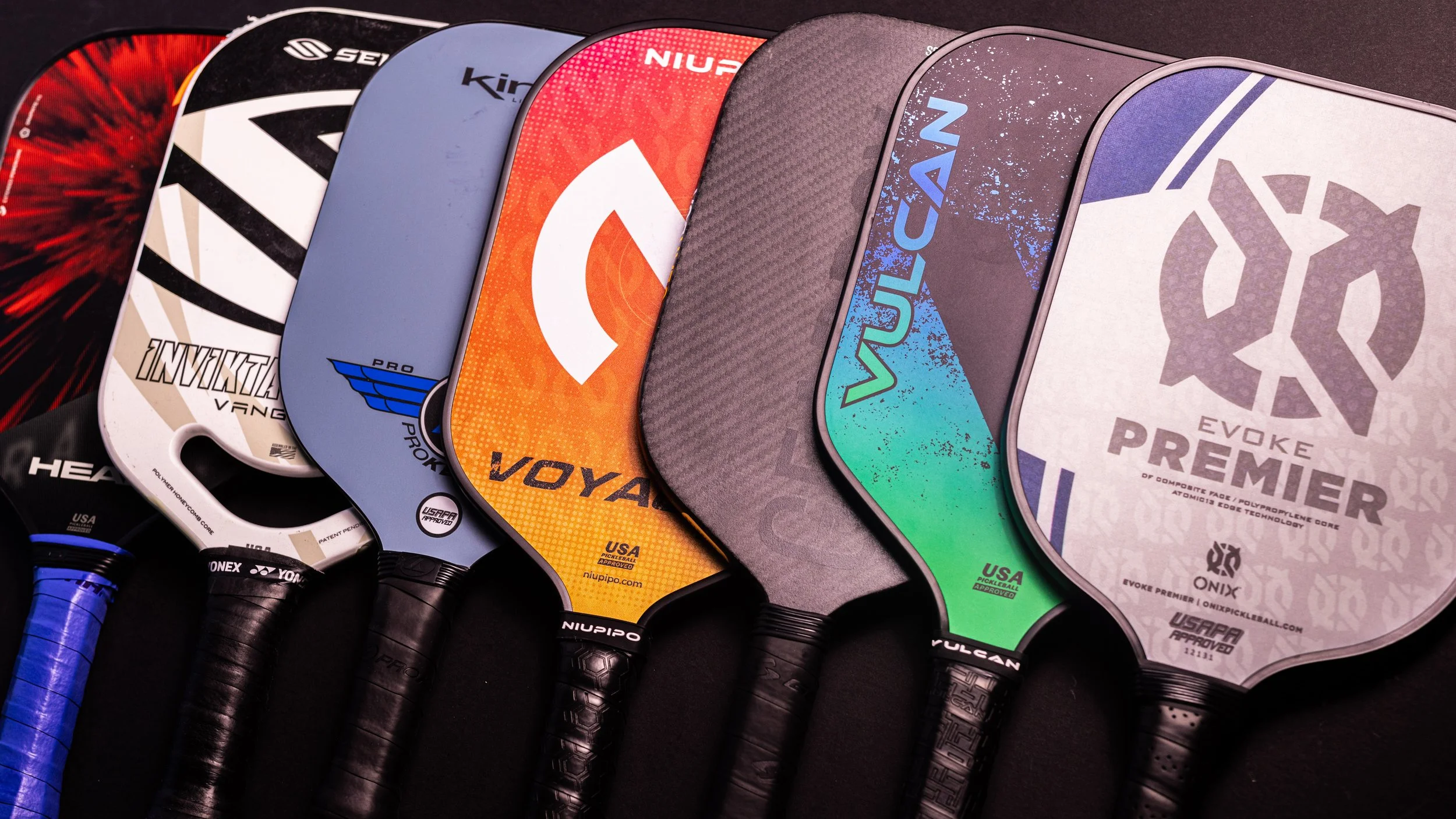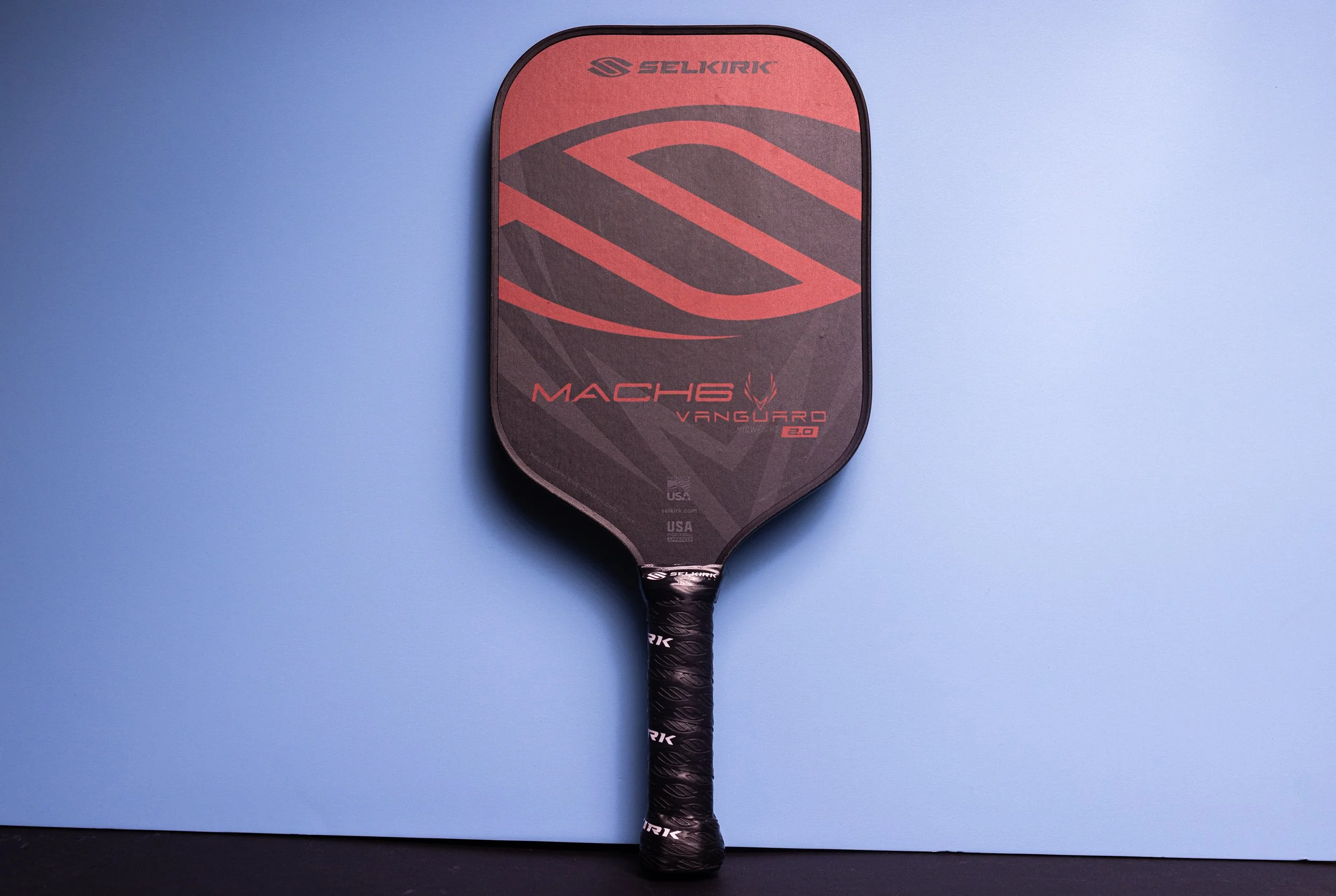Top 5 Pickleball Paddles for Control 2022
If you are a player who wants more control in your game to dink, block and reset better, then you've come to the right place. Paddles all over the market claim to be the "perfect balance of control and power" all the time. So which ones are actually good for control?
I have personally play-tested all of these paddles and think they perform exceptionally well when it comes to control. Each section will have a brief summary of the paddle, but if you’d like more of my in-depth thoughts, you can watch the video review as well.
Selkirk Vanguard 2.0 line $199.99
The Vanguard 2.0 line of paddles has been known for being some of the most control-oriented paddles on the market. Selkirk also does a great job giving you a multitude of shape options to choose from.
They have the Epic and S2 shapes which are very similar to each other, except that the S2 is wider and has a shorter 4.5" handle compared to the 5.25" handle on the Epic.
Then you have the Invikta, their classic elongated paddle. the Mach 6 which features a very long 5.875" handle, which is great for tennis players who want to use a two-handed backhand. Finally, they have two specialty shape options, the Maxima and the Omni.
Most consumers will probably pick the S2, Epic, or Invikta. I prefer the Invikta or Mach 6 because I like the extra reach that they give.
No matter what shape you pick, you will still get a great control oriented paddle. The Vanguard 2.0 line feels very plush, and because of their 16mm thickness, they are great at absorbing pace, which is great for resetting the ball back into the kitchen. Selkirk paddles also come with a limited lifetime warranty, and the paddles are built very well. I would say of the companies with edge guards; I probably hear the least complaints about Selkirks. I've also seen them honor their lifetime warranty time and time again.
The biggest drawback to the 2.0 line is spin is very poor. For some of you, that may not matter, but when you compare the Vanguard 2.0 line against other modern paddles, they fall incredibly short.
The Electrum Model E is one of my all-time favorite paddles. It's a 16mm elongated paddle with a raw carbon fiber surface. It has exceptional control while also imparting massive amounts of spin on the ball. Electrum was one of the first in the sport to introduce this surface, and now, almost all of the top companies have made a paddle with a similar raw carbon fiber surface because it has proven to be one of the best for generating spin.
In my experience playing with this paddle, I found that putting the ball anywhere on the court felt easy because it is a softer paddle, and you can generate a lot of spin to hit more extreme angles than you might be able to on other paddles. The sweet spot also felt very consistent and solid. It's hard to go wrong with the Model E because it's just a well-rounded great paddle.
I also want to give an honorable mention to the GRUVN 16E. They are a newer company, but I briefly playtested the 16E, and it is very similar to the Model E. I haven't gotten to sit down and do extensive testing with both, but I have hit them side by side for a few play sessions, and they are very similar. So if the Model E is just out of budget, the GRUVN 16E is a fantastic cheaper option.
The Radius is a funny-looking paddle compared to most on the market because it resembles a Table Tennis paddle more than anything else. The advantage of this is you get a really big sweet spot. It features a shorter 5-inch handle which many Table Tennis players coming into Pickleball love because it makes it easy to choke up on the neck of the paddle as they would in Table Tennis.
Similar to the Electrum Model E, this paddle features what Joola calls their Carbon Grip Surface, which is very similar to Electrum's raw carbon fiber. This means you can generate fantastic spin with it, and in my testing, it achieved 1576 RPM which is very good.
The Radius is an incredibly light paddle weighing, on average 7.6oz. A lot of that weight is also shifted into the handle, which makes it feel even lighter than other paddles in a similar weight range. Because of all of these factors, the Radius is VERY soft. It's incredible for blocks because it absorbs so much energy, but when it comes time to attack at the net, it can be hard to generate good pace. Lead tape can definitely help with this issue.
If you are looking for a very lightweight control paddle that gets amazing spin with a great sweet spot, this is one of the best you can get.
I want to put a disclaimer that while I think this is one of the best control paddles on the market, I don't think most people should buy it. I think many of the paddles in this list are more than adequate control paddles with great performance. The 003 is for people who have some extra cash to burn or want to try new tech. It's still an amazing paddle, but other paddles in this list are a better bang for buck.
With that being said, at the time of writing this article, the 003 is my primary paddle for doubles, and I love it. The 003 has a few very notable features:
Very lightweight 7.6oz average
Headlight (just like the Radius)
Phenomenal spin potential
20mm thick
Edgeless
This is the only other paddle on this list that is as light as the Radius and extremely headlight. The paddle weighs so little that I added over an ounce of lead tape to my paddle because it was severely lacking in power. I opted to put my lead tape on the sides and bottom corner of the paddle.
After doing this, the paddle is still a blocking and reset monster, but gained some much-needed power.
My other favorite part is the insane spin this paddle can put on the ball. In my testing it achieved 1740 RPM, which is the third highest paddle I have ever tested for spin. Serves, drives, and roll volleys allow you to add a ton of topspin and keep the ball in play.
Overall, I love this paddle. I'm even more excited for when the Invikta version comes out, and I'll have access to a longer handle. I think it's a phenomenal control paddle with a lot of great features. The biggest drawback is that it is $333, and in probably 6 or so months (I'm guessing) Selkirk will release the official version of the 003 for a lower price and improved performance.
Finally, we have the CX14E and H. If you aren't familiar with Gearbox paddles, they are incredibly unique.
They are by far the best build quality of any paddle on the market. When I say best, it isn't even close. There is nothing on the market that touches Gearbox for durability. People will play with these for years and still have the same level of performance. This is because, unlike most paddles that use a polymer core, Gearbox makes their entire paddle out of Carbon Fiber. This leads to unique very unique attributes such as:
Edgeless design
VERY controlled weight 8.0oz. Most paddles have an average, Gearbox is almost always dead on.
Extremely durable
Great spin without grit
One of the first benefits is the amazing spin that you get with their hyper bite spin technology. The first generation of the CX14 paddle was completely smooth to the touch. Gearbox believes you don't need added texture to get great spin. When I first heard this, I thought they were crazy. I immediately believed hyper bite was a gimmick like many other marketing terms companies make up.
Well, I was completely wrong. In my testing, the CX14H achieved 1694RPM, and the CX14E got 1514 RPM. To be clear, I think the spin potential between the H and E is identical. The difference in my test could be due to the swing weight of each paddle or the shape.
So as you can see, the hyper bite technology is not a gimmick. Now, Gearbox has quietly released new versions of their CX line with additional grit on the face. Unfortunately, I have not gotten to test the new CX14s, but I can only imagine that the extra grit allows for even higher spin potential. So props to Gearbox for making that adjustment.
The CX14 line of paddles are some of the softest on the market. When I first reviewed them, that was one of the reasons I didn't like it. Now that I've experimented with lead tape a lot more, I think adding lead tape could really change how it plays and probably enhance its performance a lot. The paddle absorbs a ridiculous amount of energy. Even while dinking I felt like I had to swing just a little harder than I usually do to get the ball back over.
The biggest downside I have found is the sweet spot isn't amazing. I found it slightly smaller than average when I first reviewed it. Again, I think lead tape on the sides of the paddle could help with some of this.
Because Gearbox paddles are made of entirely carbon fiber, the feel of the paddle is very different from other paddles. If you are used to polymer, Gearbox paddles can feel very polarizing. It's not uncommon for people to try it for a short period and decide they don't like it. I think you need to spend a week or so with one to decide if it is for you. On the other hand, some people find that it's the best thing they have ever used once they adjust.







